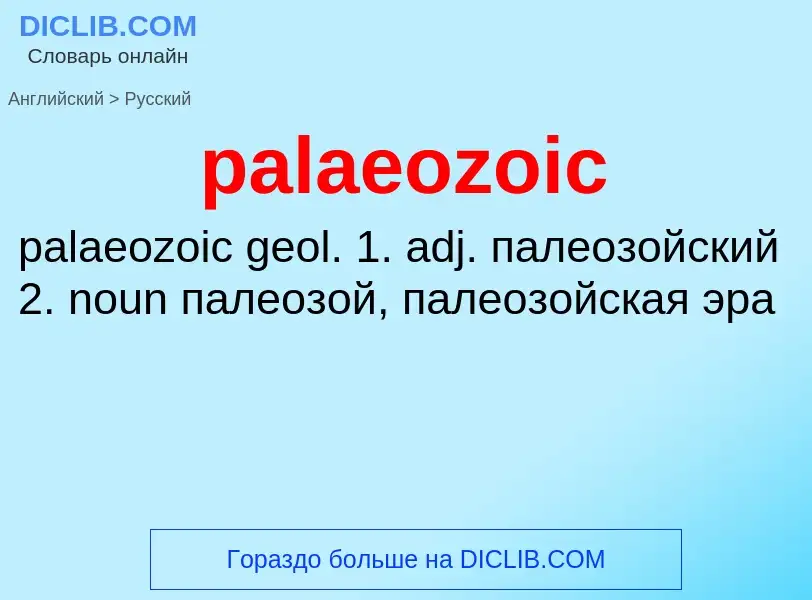Перевод и анализ слов искусственным интеллектом
На этой странице Вы можете получить подробный анализ слова или словосочетания, произведенный с помощью лучшей на сегодняшний день технологии искусственного интеллекта:
- как употребляется слово
- частота употребления
- используется оно чаще в устной или письменной речи
- варианты перевода слова
- примеры употребления (несколько фраз с переводом)
- этимология
Palaeozoic - перевод на Английский
прилагательное
общая лексика
палеозойский
существительное
общая лексика
палеозой, палеозойская эра
[pæliə'zəuik]
существительное
геология
палеозойский
в грам. знач. сущ. палеозой
палеозойская эра
Определение
Википедия
The Paleozoic (or Palaeozoic) Era is the earliest of three geologic eras of the Phanerozoic Eon. The name Paleozoic (IPA: pal-ee-ə-ZOH-ik, -ee-oh-, pay-;) was coined by the British geologist Adam Sedgwick in 1838 by combining the Greek words palaiós (παλαιός, "old") and zōḗ (ζωή), "life", meaning "ancient life").
It is the longest of the Phanerozoic eras, lasting from 538.8 to 251.902 million years ago, and is subdivided into six geologic periods (from oldest to youngest):
The Paleozoic comes after the Neoproterozoic Era of the Proterozoic Eon and is followed by the Mesozoic Era.
The Paleozoic was a time of dramatic geological, climatic, and evolutionary change. The Cambrian witnessed the most rapid and widespread diversification of life in Earth's history, known as the Cambrian explosion, in which most modern phyla first appeared. Arthropods, molluscs, fish, amphibians, reptiles, and synapsids all evolved during the Paleozoic. Life began in the ocean but eventually transitioned onto land, and by the late Paleozoic, great forests of primitive plants covered the continents, many of which formed the coal beds of Europe and eastern North America. Towards the end of the era, large, sophisticated synapsids and diapsids were dominant and the first modern plants (conifers) appeared.
The Paleozoic Era ended with the largest extinction event of the Phanerozoic Eon, the Permian–Triassic extinction event. The effects of this catastrophe were so devastating that it took life on land 30 million years into the Mesozoic Era to recover. Recovery of life in the sea may have been much faster.


![Synapsid: ''[[Dimetrodon]]'' Synapsid: ''[[Dimetrodon]]''](https://commons.wikimedia.org/wiki/Special:FilePath/DimetrodonKnight.jpg?width=200)
![[[Eogyrinus]] (an amphibian) of the Carboniferous [[Eogyrinus]] (an amphibian) of the Carboniferous](https://commons.wikimedia.org/wiki/Special:FilePath/Eogyrinus BW.jpg?width=200)

![[[Cephalaspis]] (a jawless fish) [[Cephalaspis]] (a jawless fish)](https://commons.wikimedia.org/wiki/Special:FilePath/Ostracoderm digital recreation..jpg?width=200)

![[[Trilobite]]s [[Trilobite]]s](https://commons.wikimedia.org/wiki/Special:FilePath/Trilobite Heinrich Harder.jpg?width=200)
